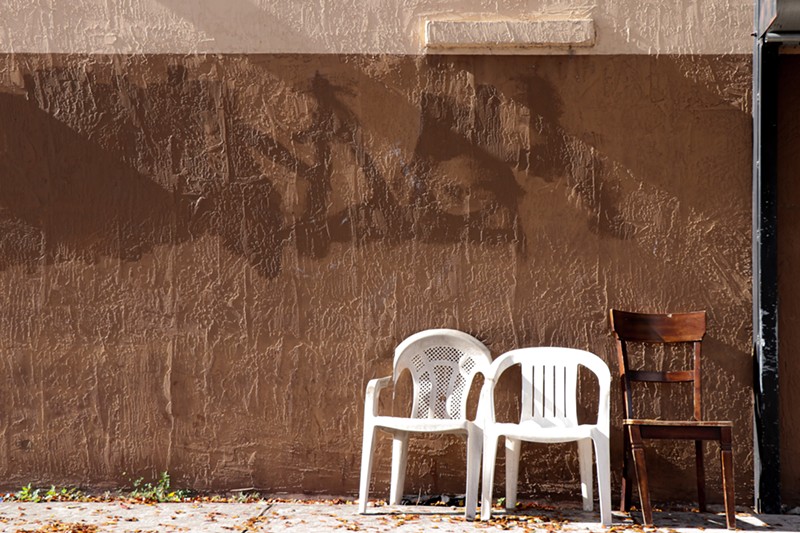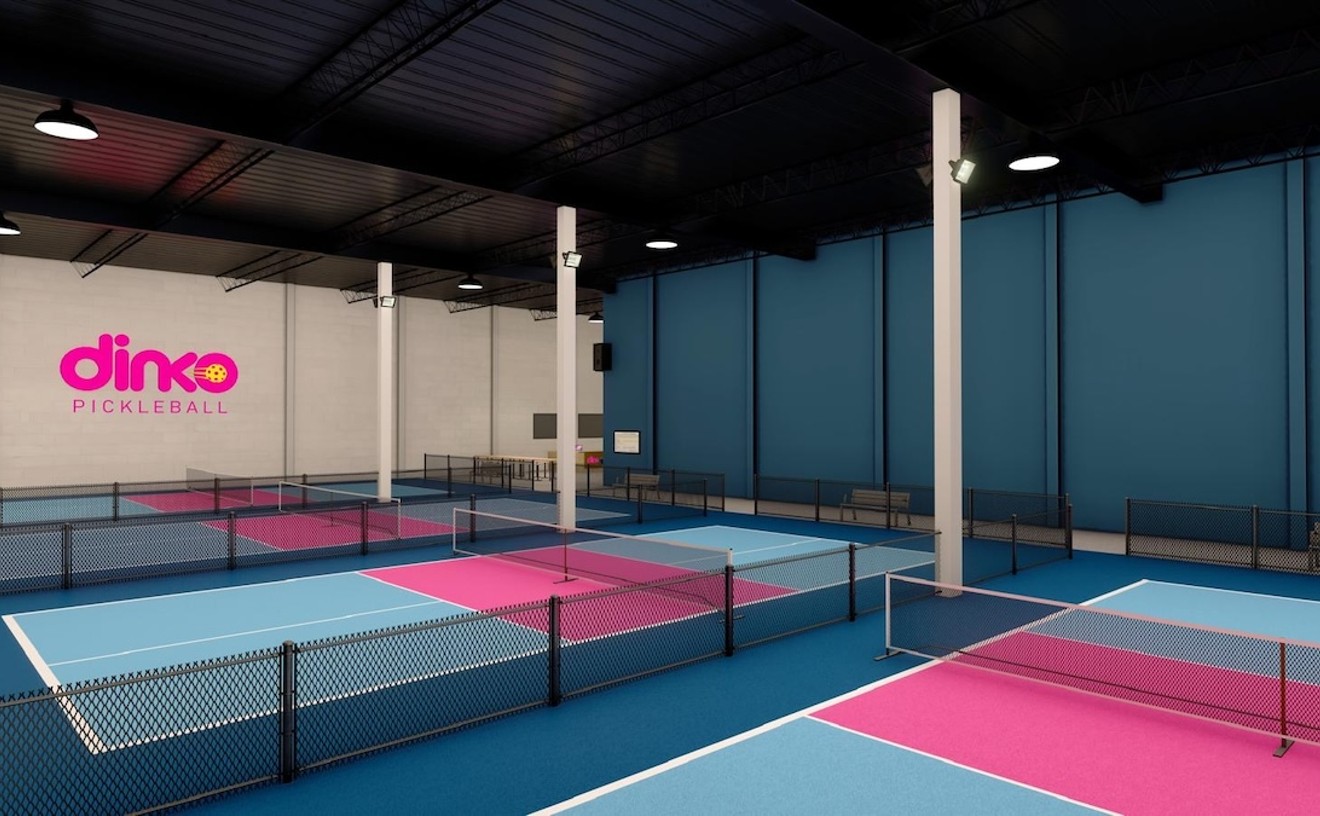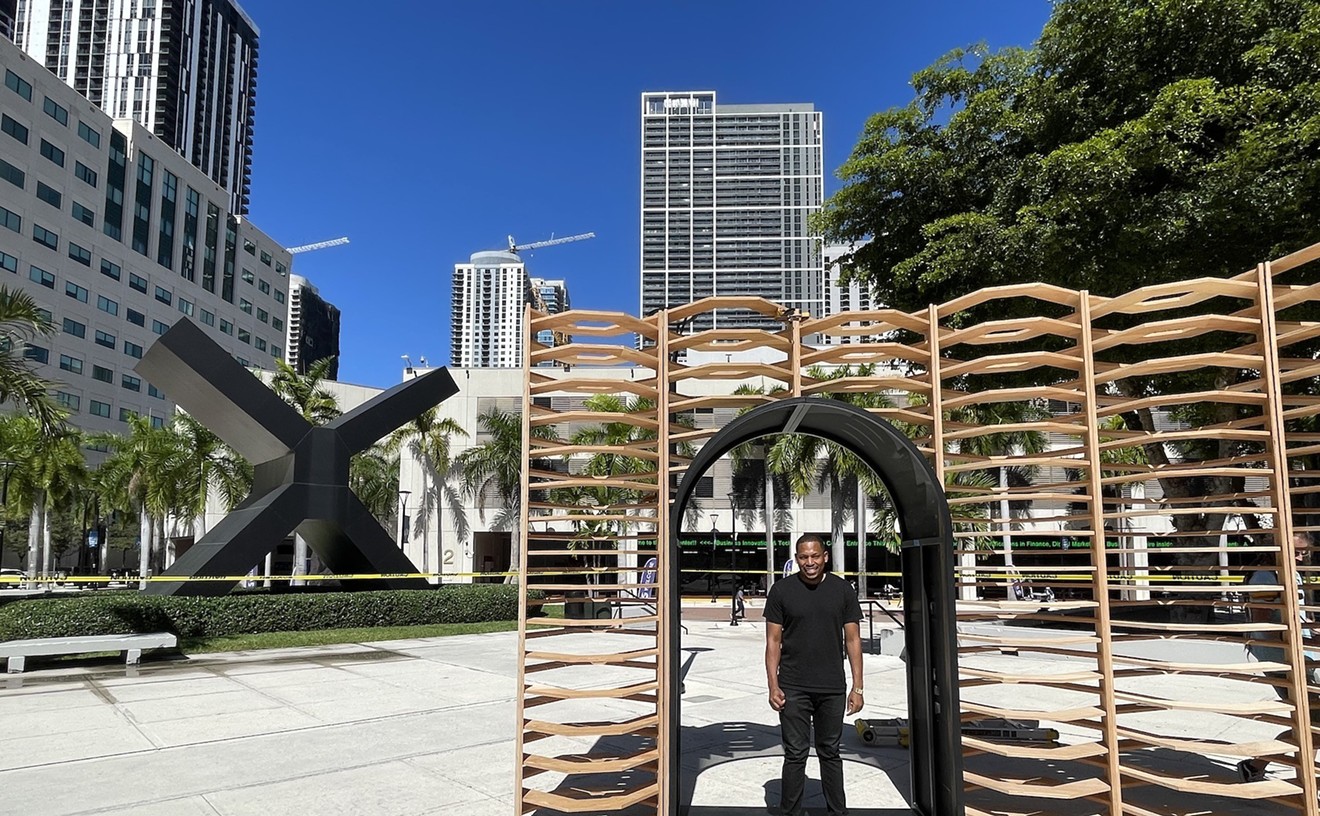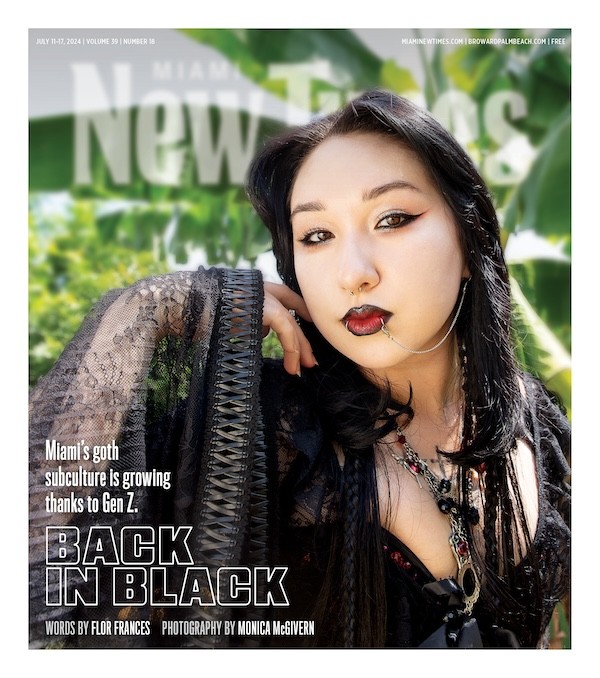In April 1951, Jack Kerouac sat at a typewriter and, fueled by speed, coffee, and pea soup, wrote most of what would become the definitive novel of the Beat Generation: On the Road. An autobiographical chronicle of Kerouac's travels in stolen cars, eighteen-wheelers, and whatever else he could hitchhike his way into, the novel has stood as an artifact of postwar pioneering and abundance, as well as individual soul-searching. Today you'd be hard-pressed to find someone capable of zigzagging across the country on odd jobs and the luck that comes with being a white man. So it's all the more interesting that curator Larry Ossei-Mensah is using Kerouac's novel as a springboard for his latest show, opening Wednesday, October 16, at Oolite Arts.
"I’m careful to say that it’s a jumping-off point because I don’t want to get tripped up in critiquing his writing," Ossei-Mensah clarifies. "But if you’ve read On the Road or any of his other work, you kind of get a sense of his approach and what he’s thinking about... There’s a rhythm and pace that, I think, makes the writing really interesting. I just definitely noticed a void, and I was like, OK, how can I think about this through my practice? How can I bring that rhythm and pace to an exhibition format?... Do I see myself in this, or does it generate more questions, more dialogue?"
One dominant dialogue happening in the resulting exhibition, titled "On the Road II," is about mobility. One of artist Osman Kahn's works for the show is made of large vinyl sheets mimicking stained-glass windows hanging over Lincoln Road. The audience of South Beach's pedestrian mall is drawn into the show through work inspired by the decorative patterns Pakistani truck drivers use to adorn the sides of their vehicles. Notions of upward mobility and the American Dream are explored in Farley Aguilar's paintings, in which hauntingly abstracted figures stare out from the canvas. In Ernesto Oroza and Gean Moreno's Efficiency, viewers can contemplate the architectural and cultural implications of the in-laws' quarters, once the realm of abuelitos and now the stuff of Airbnb rentals. And in Pat Phillips' Urban Beach Week/Rump Shaker, spectators can question the historically entrenched structures that make the mobility of black and brown people difficult at best, but most often dangerous.
"I think about mobility in terms of immigration," says Monica Sorelle, whose photographs documenting Little Haiti in anticipation of a feature-length film about the neighborhood are also in the show. "I’m thinking about dealing with the remnants of what is built and what’s going to get left behind; the mobility we’re going to have to maintain when, inevitably, the neighborhood does change and people get priced out; the cultural markers of the neighborhood, but without the people who contributed to them. Who is forced to be mobile, and who has the freedom of mobility, to choose when and where they want to be mobile?"
She relates Kerouac's approach to his mobility as a kind of cultural safari, which isn't difficult to relate to Little Haiti and the encounters leading to its transformation. But for Sorelle, it's how the show is reappropriating that idea of mobility, and the discovery and momentum that can come from it, that pulls the conversation into deeper territory.
"What’s interesting — and we don’t talk about it all the time with writers — [are] the encounters that they choose to put to the page," Ossei-Mensah says. "I think that was the original impetus: What world was [Kerouac] looking at? This exhibition is meant to be serial. It’s meant to platform artists that I just meet in my journey because I travel so much. I’m a believer that sometimes you have to identify artists who you’re having exciting dialogue with, or with their work, and put that work into a different context to kind of expand the potential conversation."
It's easy to see how mobility is made more complex by works such as Johanne Rahaman's photographs from her Black Florida project, or Gisela McDaniel's paintings depicting survivors of assault. With wisdom, empathy, and distinct but beautifully crafted images, both artists show the endurance and resilience of communities typically identified as marginalized, disenfranchised, or ignored. It's in delving into their encounters with their subjects that each artist draws out the difficult and poignant in ways that make viewers capable of developing empathy and respect for those subjects.
And though Tiff Massey's work isn't as closely focused on the subject, she takes a similar approach in unraveling a narrative from what might seem like an everyday encounter. It began while she was working on a project with black-and-white fabric, which prompted her studio manager to offer piles of gingham that had been stored away. In researching the fabric, Massey learned the stuff of picnic blankets and Dorothy Gale's dress had a pretty "fucked-up political past."
"Once I realized that gingham was a derivative of something that was made in the cotton industry [and] was used as uniforms for slaves on the plantations, I started to immediately take out the white squares and put the material back together," Massey explains. "I eliminated the white squares as a stand-in for colonialism. Not only slaves were affected, but child labor was involved. It wasn’t until I started to look at the historical figures or images wearing the gingham that I realized I had to put the figures into the work."
Some Patterns Hold Weight is a series that's still very much in development for Massey as she continues her research. But as it stands, she hopes it forces viewers to recalibrate how they approach all the signs and signifiers that remain uninterrogated in their lives. "There’s a lot of ignorance of where these things come from," she emphasizes. "The fact that it’s being appropriated still in the mass market — we don’t know all these things on purpose. Somebody makes rules or laws about whether that’s OK information." After ridding her closet of gingham, she doesn't hesitate to enlighten people she sees wearing the pattern.
"You think you’re fly, but you’re actually wearing this colonial slave uniform. That’s part of the reason why the work exists — to contradict their fly," Massey says. "But it’s up to us to investigate what that is."
It's a contemplative requirement that goes back to the show's origins — Kerouac's flirtations with spirituality and God, as well as Ossei-Mensah's intentions for the exhibition.
"The other thing about this show is just slowing people down, really getting you to consider each and every inch of what you’re looking at, what you’re hearing," Ossei-Mensah adds. "These were the artists who I felt like really are pushing me to think more critically and to ask more questions."
"On the Road II." Wednesday, October 16, through Sunday, December 15, at Oolite Arts, 924 Lincoln Rd., Miami Beach; 305-674-8278; oolitearts.org.
[
{
"name": "Air - MediumRectangle - Inline Content - Mobile Display Size",
"component": "19274298",
"insertPoint": "2",
"requiredCountToDisplay": "2",
"watchElement": ".fdn-content-body",
"astAdList": [
{
"adType": "rectangle",
"displayTargets": "mobile"
}
]
},{
"name": "Editor Picks",
"component": "17482312",
"insertPoint": "4",
"requiredCountToDisplay": "1",
"watchElement": ".fdn-content-body",
"astAdList": [
{
"adType": "rectangle",
"displayTargets": "desktop|tablet"
},{
"adType": "rectangle",
"displayTargets": "desktop|tablet|mobile"
}
]
},{
"name": "Inline Links",
"component": "18711090",
"insertPoint": "8th",
"startingPoint": 8,
"requiredCountToDisplay": "7",
"maxInsertions": 25
},{
"name": "Air - MediumRectangle - Combo - Inline Content",
"component": "17482310",
"insertPoint": "8th",
"startingPoint": 8,
"requiredCountToDisplay": "7",
"maxInsertions": 25,
"watchElement": ".fdn-content-body",
"astAdList": [
{
"adType": "rectangle",
"displayTargets": "desktop|tablet"
},{
"adType": "rectangle",
"displayTargets": "desktop|tablet|mobile"
}
]
},{
"name": "Inline Links",
"component": "18711090",
"insertPoint": "8th",
"startingPoint": 12,
"requiredCountToDisplay": "11",
"maxInsertions": 25
},{
"name": "Air - Leaderboard Tower - Combo - Inline Content",
"component": "17482313",
"insertPoint": "8th",
"startingPoint": 12,
"requiredCountToDisplay": "12",
"maxInsertions": 25,
"watchElement": ".fdn-content-body",
"astAdList": [
{
"adType": "leaderboardInlineContent",
"displayTargets": "desktop|tablet"
},{
"adType": "tower",
"displayTargets": "mobile"
}
]
}
]













